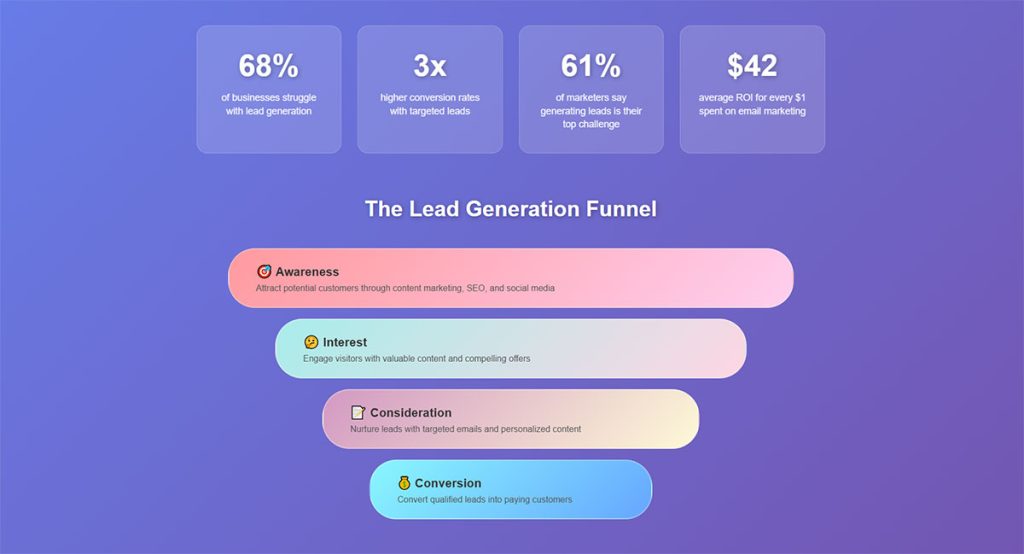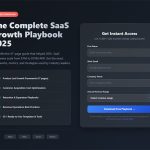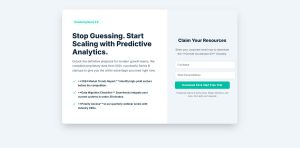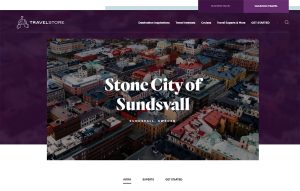Your website probably loses more subscribers than it gains. That’s the reality when your email signup sits ignored in the footer or buried on a contact page somewhere. Opt-in form…
Table of Contents
Every small business owner loses potential customers daily because they lack a systematic approach to attracting new prospects. Learning how to generate leads for your business transforms random website visitors into paying customers through proven lead generation strategies.
Without consistent customer acquisition systems, businesses struggle with unpredictable revenue growth. Marketing managers and sales representatives need reliable methods to fill their pipeline management systems with qualified prospects.
This guide reveals practical tactics for building sustainable lead nurturing campaigns that work across different industry verticals. You’ll discover how to create compelling lead magnets, optimize your website for conversion rate improvement, and implement marketing automation that delivers sales qualified leads consistently.
From content marketing tactics to pay-per-click advertising, we’ll cover nine essential strategies that transform your business into a lead-generating machine.
Building Your Lead Magnet Strategy
Successful customer acquisition starts with offering something valuable before asking for anything in return. Lead magnets work because they solve immediate problems while building trust with potential customers. Research shows that 50% of marketers report seeing higher conversion rates when using lead magnets, making them essential tools for growing your business.
Creating Content That Attracts Prospects
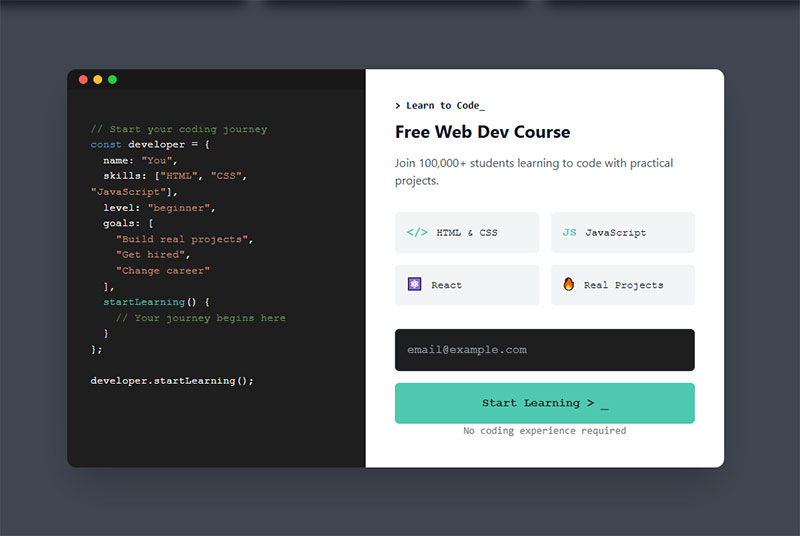
Free guides and how-to resources perform exceptionally well across all industries. Your target audience searches for solutions daily. Create comprehensive guides that address their biggest challenges.
Among long-form written content, guides prove most effective with a conversion rate of 67.2%. When creating guides, focus on actionable advice prospects can implement immediately.
Templates save people time and effort. Business owners love ready-to-use resources they can implement immediately. Offer spreadsheet templates, checklists, or planning worksheets that relate directly to your services.
Template kits show remarkable performance. One startup’s lead-gen template kit saw a 72% increase in email captures compared to traditional downloadable guides when A/B tested.
Webinars and educational videos build stronger connections than written content alone. Live sessions allow real-time interaction with prospects. Record these sessions for ongoing lead generation value.
Webinars deliver the highest conversion rates among video content at 70.2%. Even more impressive, 73% of B2B webinar attendees become qualified leads, with 15% of attendees eventually purchasing the product or service.
Ebooks remain the most popular choice among marketers, with 27.7% using them as their primary lead magnet. This popularity stems from their versatility and proven track record. Research indicates 59% of respondents prefer ebook content, and 51% consider it the most effective format.
Industry reports and research data position you as an authority. Small business owners and marketing managers appreciate data-driven insights they can share with their teams or clients.
Making Your Lead Magnets Irresistible
Focus on solving real problems your buyer personas face every day. Generic content gets ignored. Specific solutions get downloaded and shared.
Short-form content often outperforms lengthy resources. Studies reveal that 73% of marketers achieve higher conversion rates with short-form video content, while 58.6% see better results from concise written materials compared to 41.4% who favor long-form content.
Provide immediate value that prospects can apply within minutes of downloading. Quick wins build confidence in your expertise and increase the likelihood they’ll engage further.
Make content easy to consume and apply. Break complex processes into simple steps. Use bullet points, numbered lists, and clear headings. Busy professionals appreciate scannable content.
Position yourself as the expert by sharing unique insights and proven strategies. Reference your experience working with similar businesses or solving comparable challenges.
Consider interactive elements to boost engagement. Quizzes achieve an average lead capture rate of 31.6%, making them powerful alternatives to traditional downloads.
Where to Place Your Lead Magnets
On your website homepage and key pages, lead magnets should be prominently displayed without overwhelming visitors. Strategic placement in your navigation menu or sidebar ensures visibility.
The average lead magnet landing page converts at 18%, but proper placement can dramatically improve these numbers. Positioning call-to-action buttons next to opt-in forms can boost lead generation rates by up to 1617%.
Blog posts and resource sections provide natural opportunities to offer relevant lead magnets. Match your offers to the content topics for better conversion rates. Remember that 55% of landing page submissions come from lead magnets, highlighting their importance in your content strategy.
Social media posts and profiles expand your reach beyond your existing website traffic. LinkedIn marketing works particularly well for B2B lead generation, while Facebook advertising excels for consumer-focused businesses with an average conversion rate of 9.21%.
Email signatures and business cards turn every interaction into a potential lead generation opportunity. Include brief mentions of your most popular resources.
Company size affects performance. Smaller organizations with 2-9 employees see the highest conversion rates for text-based lead magnets at 17.6%, compared to 8.2% for companies with 10-49 employees and 6.7% for those with 50-249 employees.
Remember that 79% of marketing leads fail to convert without proper follow-up. Your lead magnet is just the beginning of the relationship-building process.
Website Lead Generation Tactics
Your website should function as a 24/7 sales representative, capturing leads even while you sleep. Every page needs strategic elements that guide visitors toward conversion.
Turning Your Website Into a Lead Machine

Clear calls-to-action on every page direct visitors toward your desired outcome. Avoid generic phrases like “click here.” Use specific language that describes the value visitors will receive.
Effective contact forms make it simple for prospects to reach out. Keep required fields minimal while gathering essential information for follow-up. Form design impacts conversion rates significantly.
Live chat features provide instant connection opportunities. Many visitors prefer immediate answers over waiting for email responses. Customer relationship management systems can integrate chat data with your lead tracking.
Strategic popup forms capture attention without annoying visitors. Exit-intent popups appear when users show leaving behavior, offering last-chance value propositions.
Landing Pages That Convert Visitors

Writing headlines that grab attention requires understanding your audience’s primary concerns. Test different approaches to discover what resonates most with your target audience identification.
Keep forms short and simple to reduce abandonment rates. Each additional field decreases completion rates. Request only information you’ll actually use for follow-up.
Add trust signals and testimonials throughout your landing pages. Social proof reduces risk perception and increases confidence in your solutions. Include client names and photos when possible.
Testing different versions improves results over time. A/B testing methods help identify which elements drive better conversion rate improvement. Test one element at a time for clearer insights.
SEO Strategies to Attract More Visitors
Finding keywords your customers search for requires thorough research and analysis. Market research analysis reveals the language your prospects use when seeking solutions.
Creating helpful content around those topics establishes your expertise while improving search visibility. Focus on content marketing tactics that provide genuine value rather than promotional material.
Getting other websites to link to yours increases your authority and search rankings. Guest blogging opportunities and industry partnerships can generate valuable backlinks naturally.
Making your site fast and mobile-friendly affects both user experience and search rankings. Mobile marketing strategies must account for the growing number of mobile users in your geographic territories.
Successful lead generation combines multiple strategies working together. Your marketing technology stack should integrate these various tactics for maximum effectiveness and streamlined pipeline management.
Social Media Lead Generation
Social platforms offer direct access to your target audience identification without waiting for them to find your website. Each platform attracts different demographics and business types.
Choosing the Right Platforms for Your Business
Where your ideal customers spend their time determines your platform priorities. B2B lead generation works differently than B2C lead generation strategies.
LinkedIn for B2B professional connections dominates the business networking space. Sales representatives and business development roles find qualified prospects through targeted outreach and content sharing.
Facebook and Instagram for consumer brands excel at visual storytelling and community building. These platforms work well for local business marketing and customer retention efforts.
Twitter for real-time engagement and news connects you with industry conversations. Monitor hashtags and join discussions relevant to your industry verticals.
Content Strategies That Generate Interest
Behind-the-scenes posts that build trust humanize your brand. Show your team working, your office environment, or your creative process. Authenticity drives engagement.
Educational content demonstrates expertise without being promotional. Share tips, industry insights, and solutions to common problems your buyer persona development research has revealed.
User-generated content and customer stories provide powerful social proof. Customer success teams can identify satisfied clients willing to share their experiences publicly.
Interactive posts like polls and questions boost engagement rates. Social algorithms favor content that generates comments and shares, expanding your reach organically.
Social Media Advertising for Targeted Leads
Setting up Facebook and Instagram ad campaigns requires clear objectives and audience targeting. Use demographic survey questions insights to define your ideal customer profiles.
LinkedIn ads for reaching business professionals cost more but deliver higher-quality B2B lead generation results. Target by job title, company size, and industry for precision.
Creating compelling ad copy and visuals stops scroll behavior. Test different value proposition creation approaches to discover what resonates with your audience.
Tracking which ads bring the best leads requires proper analytics and reporting setup. Connect your CRM software platforms to measure lead-to-customer conversion rates.
Email Marketing for Lead Nurturing
Email remains the highest ROI channel for customer acquisition and retention. Your email marketing automation system becomes a critical component of your sales funnel optimization.
Building Your Email List the Right Way
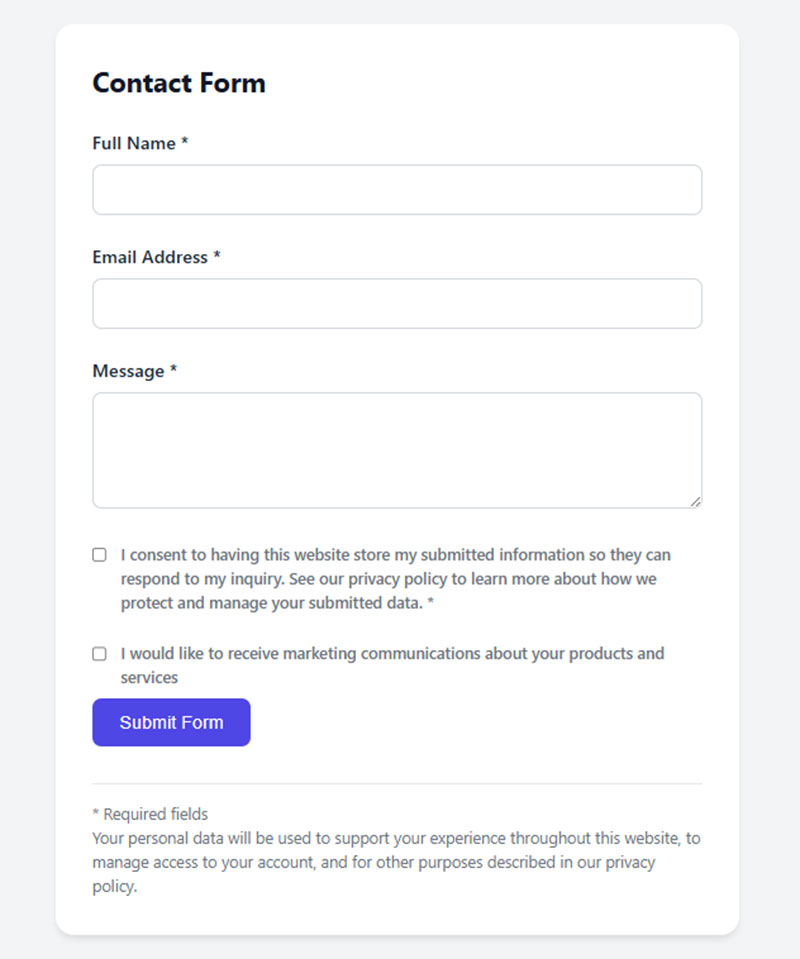
Getting permission before adding people keeps you compliant and ensures engaged subscribers. GDPR compliant forms protect both your business and subscriber privacy.
Creating subscription forms for your website captures visitor information at the right moment. Place forms strategically throughout your site for maximum visibility.
Offering valuable content in exchange for emails provides clear value exchange. Your lead magnets should align with subscriber interests and business needs.
Making it easy to subscribe and unsubscribe builds trust. Complicated processes frustrate users and damage your reputation with email service providers.
Email Campaigns That Keep Leads Engaged
Welcome series for new subscribers sets expectations and delivers promised value immediately. First impressions determine whether subscribers stay engaged or unsubscribe quickly.
Regular newsletters with helpful tips position you as a trusted resource. Content marketing tactics that work in newsletters include industry updates, how-to guides, and curated resources.
Product updates and company news keep your business top-of-mind. Share milestones, new team members, and behind-the-scenes content that builds personal connections.
Special offers and exclusive content reward subscriber loyalty. Marketing qualified leads respond well to early access opportunities and member-only resources.
Automating Your Email Follow-Up Process
Setting up drip campaigns for new leads ensures consistent communication without manual effort. Marketing automation platforms handle timing and personalization automatically.
Sending targeted messages based on behavior improves relevance and engagement. Track which emails subscribers open and click to trigger appropriate follow-up sequences.
Re-engaging inactive subscribers prevents list decay and improves deliverability rates. Create win-back campaigns offering special incentives or updated content.
Moving leads through your sales funnel requires strategic email sequences. Map your customer relationship management data to email triggers for seamless lead nurturing campaigns.
Modern email service providers integrate with CRM software platforms and marketing technology stack components. This integration enables lead scoring systems that identify when prospects become sales qualified leads ready for direct outreach.
Track conversion rate improvement metrics across your email campaigns. A/B testing methods help optimize subject lines, send times, and content formats for better pipeline management results.
Networking and Referral Programs
Personal connections drive B2B lead generation more effectively than cold outreach. Business networking groups create opportunities for meaningful relationship building.
Building Relationships That Generate Leads
Attending industry events and conferences puts you in front of your target audience identification. Marketing conferences and trade shows concentrate prospects in one location.
Joining professional associations and groups provides ongoing networking opportunities. Chamber of commerce memberships offer local business connections and referral potential.
Speaking at events to show your expertise positions you as an industry authority. Marketing managers and business consultants seek expert insights for their teams.
Following up with new connections properly separates professional networkers from casual attendees. Connect within 48 hours while conversations remain fresh.
Creating a Referral System That Works
Making it easy for customers to refer friends removes friction from the referral process. Simple referral forms capture referral information efficiently.
Offering rewards that motivate referrals encourages active participation. Customer retention improves when clients feel valued for their advocacy efforts.
Tracking and following up on referral leads ensures no opportunities slip through cracks. CRM software platforms manage referral pipelines alongside other lead generation strategies.
Thanking customers who send you business strengthens relationships and encourages future referrals. Personal notes work better than automated messages.
Partnership Opportunities for More Leads
Finding businesses that serve your same customers creates mutual referral opportunities. Industry verticals often have complementary service providers.
Cross-promoting each other’s services expands reach without additional advertising costs. Marketing qualified leads trust recommendations from businesses they already use.
Joint ventures and collaborative projects demonstrate expertise while sharing lead generation costs. Professional associations facilitate partnership introductions.
Guest posting and content sharing builds authority while accessing new audiences. Content marketing tactics work better when amplified through partner networks.
Paid Advertising for Quick Lead Generation
Paid channels deliver immediate results while organic strategies build momentum. Pay-per-click advertising provides controllable lead flow.
Google Ads for Search-Based Leads
Choosing keywords that show buying intent targets prospects ready to purchase. Market research analysis reveals high-conversion search terms.
Writing ads that stand out from competitors requires compelling value proposition creation. Test different messaging approaches for conversion rate improvement.
Creating landing pages that match your ads maintains message consistency. Landing page forms should align with ad promises for better conversion rates.
Managing your budget for best results requires constant analytics and reporting monitoring. Return on investment tracking guides budget allocation decisions.
Social Media Advertising Strategies
Facebook and Instagram lead generation ads target specific demographics and interests. Social media platforms offer detailed targeting options for customer acquisition.
LinkedIn sponsored content for B2B leads reaches business development roles and sales representatives effectively. Higher costs deliver better lead quality.
YouTube video ads for visual products showcase solutions through demonstration. Video marketing content builds trust before prospects visit your website.
Twitter promoted tweets for timely offers capitalize on trending topics and real-time conversations. Digital marketing channels work best when messages match platform behavior.
Other Paid Advertising Options
Display ads on relevant websites build brand awareness while targeting interested audiences. Industry trade publications offer specialized advertising opportunities.
Podcast sponsorships in your industry reach engaged audiences during consumption moments. Affiliate marketing programs expand reach through partner networks.
Local advertising for service-based businesses targets geographic territories effectively. Local business marketing benefits from location-based targeting options.
Retargeting ads for website visitors re-engage prospects who showed initial interest. Conversion tracking tools measure which touchpoints drive final conversions.
Successful paid advertising requires integration with your marketing technology stack. Lead scoring systems help identify which paid channels deliver sales qualified leads versus basic inquiries.
Enterprise sales strategies often combine multiple paid channels for comprehensive coverage. Sales enablement teams need clear lead source tracking for effective follow-up prioritization.
Content Marketing for Long-Term Lead Growth
Content marketing tactics build sustainable lead generation strategies over time. Quality content attracts marketing qualified leads who trust your expertise before making purchase decisions.
Blog Content That Attracts Your Ideal Customers
Writing about problems your customers face positions you as a problem-solver. Small business owners search for solutions daily. Address their pain points directly.
How-to guides that show your expertise demonstrate practical knowledge while building authority. Marketing managers appreciate actionable advice they can implement immediately.
Industry news and trend analysis keeps your audience informed. Market research analysis helps you identify trending topics worth covering.
Customer success stories and case studies provide social proof while showcasing results. Customer success teams can identify clients willing to participate in content creation.
Video Content for Better Engagement
YouTube channel with helpful tutorials establishes long-term visibility. Video marketing content receives higher engagement than text-based posts across social media platforms.
Live streaming on social platforms creates real-time connections. Digital marketing agencies use live content to showcase expertise and answer questions immediately.
Product demonstrations and reviews help prospects understand your solutions. Visual explanations work better than written descriptions for complex services.
Behind-the-scenes company videos humanize your brand. Show your team, workspace, and company culture to build personal connections.
Podcasting and Audio Content
Starting your own industry podcast creates ongoing content opportunities. Influencer partnerships often begin through podcast collaborations.
Being a guest on other people’s shows expands your reach to new audiences. Professional associations maintain lists of members seeking podcast guests.
Creating audio versions of blog content serves different content consumption preferences. Mobile marketing strategies should include audio content for commuting audiences.
Sponsoring relevant podcasts targets engaged listeners in your industry verticals. Podcast advertising typically delivers higher engagement than display ads.
Measuring and Improving Your Lead Generation
Analytics and reporting reveal which lead generation strategies deliver results. Conversion tracking tools measure effectiveness across all channels.
Key Metrics to Track Your Success
Number of leads generated each month provides baseline performance data. Track totals by source to identify top-performing channels.
Cost per lead across different channels guides budget allocation decisions. Pay-per-click advertising costs vary significantly from content marketing tactics.
Lead-to-customer conversion rates measure lead quality beyond quantity. Sales qualified leads convert at higher rates than general inquiries.
Lifetime value of customers from each source determines long-term channel profitability. Enterprise sales strategies typically generate higher-value customers than mass marketing approaches.
Tools for Tracking and Analysis
Google Analytics for website traffic and conversions provides free comprehensive tracking. Set up goal tracking for lead capture forms and key pages.
CRM systems for managing lead information centralize prospect data. CRM software platforms integrate with marketing automation tools for seamless tracking.
Email marketing platforms for campaign results measure open rates, click rates, and conversions. Email service providers offer detailed performance analytics.
Social media analytics for engagement data track reach, engagement, and click-through rates. Social media platforms provide native analytics tools for campaign measurement.
Testing and Improving Your Results
A/B testing different approaches identifies optimization opportunities. Test landing page forms, email subject lines, and ad copy systematically.
Analyzing which channels work best guides resource allocation. Digital marketing channels perform differently for various industry verticals.
Adjusting your strategy based on data ensures continuous improvement. Pipeline management software helps identify bottlenecks in your sales funnel optimization.
Scaling up what works and cutting what doesn’t maximizes return on investment tracking. Marketing budget allocation should reflect actual performance data.
Successful lead nurturing campaigns require ongoing optimization. Customer relationship management systems track prospect behavior patterns that inform lead scoring systems. Marketing technology stack integration enables comprehensive prospect identification and customer acquisition measurement.
FAQ on How To Generate Leads For Your Business
What are the fastest ways to generate leads?
Pay-per-click advertising and social media advertising deliver immediate results. Google Ads campaigns target prospects actively searching for solutions. Lead capture forms on landing pages convert traffic instantly. Live chat features engage website visitors in real-time for quick customer acquisition.
How much should I spend on lead generation?
Marketing budget allocation typically ranges from 5-15% of revenue for small business owners. Cost per lead varies by industry and channel. B2B lead generation costs more than B2C lead generation. Track return on investment across all digital marketing channels to optimize spending.
Which social media platforms work best for leads?
LinkedIn marketing dominates B2B lead generation for business development roles. Facebook advertising and Instagram marketing excel for consumer brands. Twitter works for real-time engagement. Choose platforms where your target audience identification research shows prospects spend time.
How do I create effective lead magnets?
Solve specific problems your buyer persona development reveals. Offer immediate value through templates, guides, or tools. Make content easily consumable and actionable. Position yourself as the expert by sharing unique insights that marketing managers and sales representatives can implement immediately.
What makes a good contact form?
Keep contact forms short with essential fields only. Use clear labels and intuitive design. Include trust signals and privacy statements. Mobile forms must work perfectly on all devices. Test different versions to improve conversion rate improvement continuously.
How long does lead generation take to work?
Content marketing tactics show results in 3-6 months. Email marketing automation builds momentum over time. Pay-per-click advertising generates leads immediately. Referral programs depend on existing customer retention rates. Combine multiple lead generation strategies for consistent results.
How do I qualify leads effectively?
Use lead scoring systems to rank prospects by engagement and fit. Sales qualified leads meet specific criteria like budget, authority, and timeline. CRM software platforms track prospect behavior automatically. Marketing qualified leads show interest but need nurturing before sales contact.
What’s the best CRM for lead management?
CRM software platforms like HubSpot, Salesforce, and Pipedrive offer different features. Small business owners need simple systems with marketing automation integration. Enterprise sales strategies require advanced pipeline management tools. Choose based on team size and complexity needs.
How do I nurture leads through email?
Create welcome series for new subscribers using email service providers. Send targeted messages based on behavior and interests. Lead nurturing campaigns should provide value before promoting products. Marketing automation handles timing and personalization while maintaining personal connections.
How do I measure lead generation success?
Track leads generated monthly, cost per lead by channel, and lead-to-customer conversion rates. Monitor lifetime value of customers from each source. Use Google Analytics for website conversions and CRM systems for pipeline management. A/B testing different approaches reveals optimization opportunities.
Conclusion
Mastering how to generate leads for your business requires combining multiple strategies into a cohesive system. Sales funnel optimization and prospect identification work together to attract qualified prospects consistently.
Digital marketing agencies and business consultants understand that sustainable growth comes from diversified lead generation strategies. Your marketing technology stack should integrate email marketing automation, social media platforms, and conversion tracking tools seamlessly.
Start with one or two tactics that align with your industry verticals and geographic territories. Networking events and trade show participation complement digital efforts effectively. Affiliate marketing programs and influencer partnerships expand reach without major upfront investment.
Success depends on consistent analytics and reporting to identify what works. Lead qualification processes ensure your sales enablement team focuses on high-potential prospects. Customer feedback collection guides strategy refinement over time.
Building effective lead nurturing campaigns takes patience, but the revenue growth results justify the investment in proper systems and processes.


